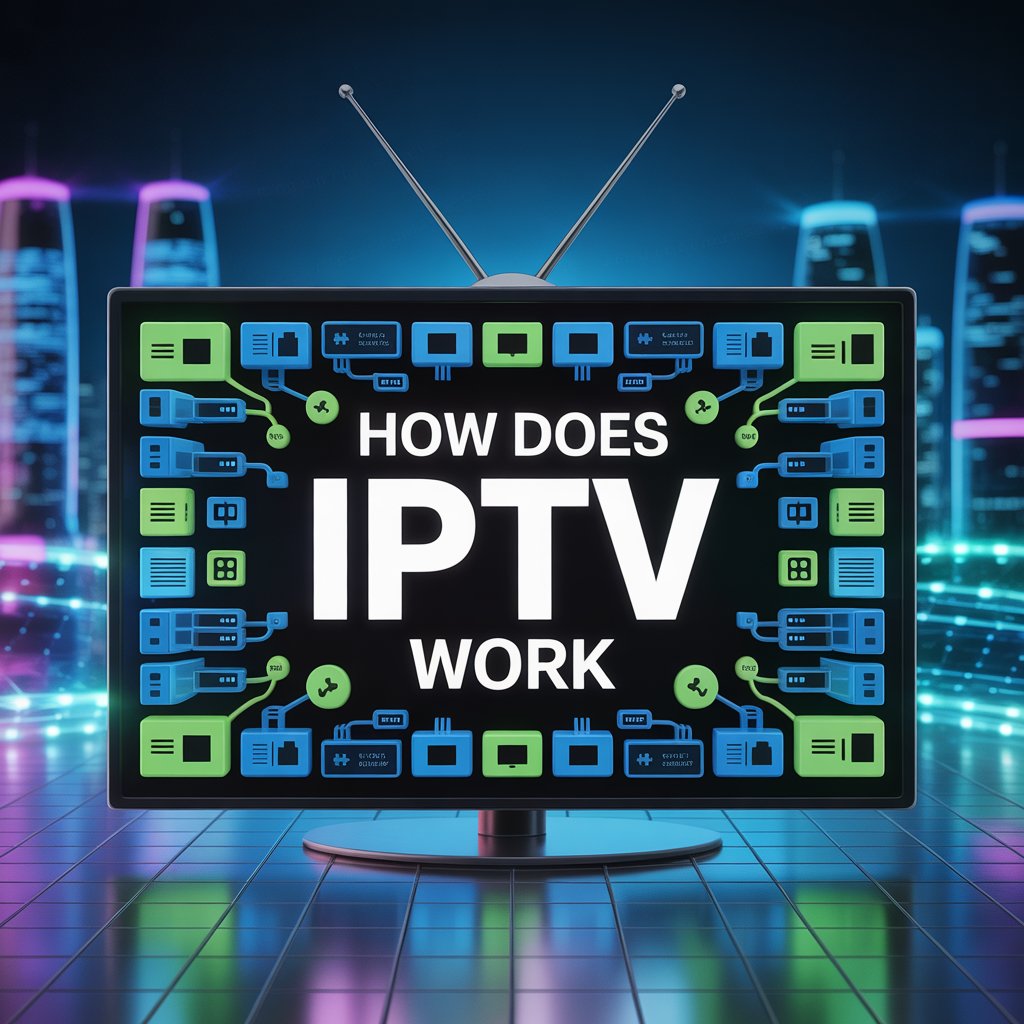How does iptv work

How Does IPTV Work?
Content Acquisition
The very first step in the IPTV workflow is to acquire content. It involves gathering the video and audio sources that will eventually be streamed to viewers.
Sources:
IPTV providers obtain content from a variety of sources, including:
Live channels on satellite TV
Cable broadcasts
terrestrial broadcasts over the air Video-on-demand collections Concerts, sports, and other live events
Process:
The capture of the raw video feed is done to prepare it for the subsequent steps. Obtaining digital files from content creators and studios or receiving satellite signals with specialized receivers could be examples of this.
Importance:
The variety and dependability of channels and programs available to users are determined by the quality and variety of content acquired.
In a nutshell, content acquisition entails gathering the original motion pictures, live broadcasts, and television shows that will be processed and delivered via IPTV.
Encoding & Compression
The raw video and audio signals must be prepared for effective internet transmission after the content is acquired. Encoding and compression come into play at this point.
Encoding: A digital file that can be streamed online is created from the raw video and audio. H.264 (AVC), H.265 (HEVC), and MPEG-4 are common encoding standards. Encoding guarantees that the video will play on a variety of devices, including smart TVs, smartphones, and computers.
Compression: Compression reduces the file size without significantly sacrificing quality because raw video files typically have a large file size. This helps users with slow internet speeds save bandwidth and makes streaming easier.
Benefits: enables the delivery of high-quality video while consuming less data.
supports adaptive streaming, which alters the quality of the video depending on the user’s internet speed.
allows multiple users to stream simultaneously without overloading the network.
Methods and Equipment:
Live or on-demand video streams are converted and compressed in real time by IPTV providers using specialized hardware and software encoders.
Storage & Management
Encoded video content is kept on servers.
Manages on-demand libraries and live streams.
Utilizes Content Delivery Networks (CDNs) for global content distribution.
Manages content organization and user rights.
Ensures the rapid and dependable delivery of content.
Transmission over IP Network
Utilizes the Internet Protocol (IP) to send video streams.
Uses broadband internet to distribute content.
Enables streaming in both unicast (one-to-one) and multicast (one-to-many) modes.
Minimizes buffering and latency by optimizing network traffic.
Enables live streaming in real time and on-demand access.
User Request & Authentication
On their device, the user selects a channel or video.
The IPTV system checks the subscription status and user credentials.
Examines access permissions for requested content.
Ensures authorized and safe streaming.
Enables or restricts access on the basis of authentication.
Streaming & Delivery
The user’s device receives the requested video stream from the IPTV server.
Uses multicast for multiple users or unicast for individual streams.
Adjusts the quality of the stream in response to the user’s internet speed (adaptive bitrate).
Reduces buffering and latency for quick playback.
Supports a variety of devices, including smartphones, PCs, set-top boxes, and smart TVs.
Decoding & Playback
User’s device receives the IP video stream.
Transforms the compressed digital data into signals for audio and video.
Displays the content in real time.
Supports a variety of resolutions and formats.
Consists of pause, rewind, and fast-forward controls for users.
